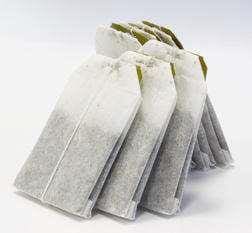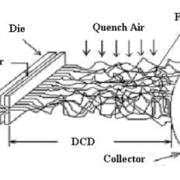Mechanical Bonded Fabrics essentially involves the strengthening of webs through the physical entanglement of fibres. Mechanical methods include needlepunching, hydroentangling and stitch bonding.
Non-woven fabric is a fabric like material made from staple fibre (short) and long fibres (continuous long), bonded together by chemical, mechanical, heat or solvent treatment.


Why bonding?
- All fibres (Natural, Manmade) always have to achieve some specific requirements, the fiber choice with the appropriate application of bonding becomes essential.
- This can be achieved by comparing the requirements to be met together with their obtained results from individual fibre.
Non-woven fabric bonding can be defined as:
- Mechanical Bonding
- Chemical Bonding
- Thermal Bonding
- Bonding of Spun Laid Web
Mechanical Bonding
Mechanical bonding is when the fibres are not altered by either heat or chemicals and are instead bonded by an alternate method.
Hydro-Entanglement bonding (also called spun lace), bonds the fibers by mechanically intertwining the fibres with water jets. Similar to spunlace there is also needle punching/needle felting which uses needles to intertwine the fibers as opposed to the water jets.
Also, there is ultrasonic pattern bonding for use in materials that need to be a bit softer than other non-wovens.

Mechanical Bonding Types
- Stitch Bonding
- Needle Punch Technique
- Hydro-Entanglement
Needle Punching
- Needle-punching is a non-woven process by which the fibres are mechanically entangled to produce a non-woven fabric by repeated penetration of barbed needles through a preformed dry fibrous web.
- More importantly, Needles are the heart of the needle-punching process.
- The machine which accomplishes this process is known as needle loom.

Applications:
- Geosynthetics
- Filter media
- Synthetic leather
- Waddings and Paddings
- Floor coverings
- Automotive fabrics
- Insulation
- Blankets
- Wipes
- Roofing
Hydro Entanglement
Hydroentanglement, spun lacing, hydraulic entanglement, and water jet needling are synonymous terms describing the process of mechanically bonding the fibres in a web by means of high energy water jets. Moreover, the machine which accomplishes this is known as hydroentanglement or Spun lace machine.

Applications:
- Wipes
- Surgical fabrics
- Medical gauge
- Filter cloths
- Artificial leather
- Automotive fabrics
- Linings and clothes, etc.
Stitch bonding
Stitch-bonding is a process by which fibre webs and/or yarns are bonded together by stitching with continuous filament or staple yarn, creating a series of loops that hold the web together.
Stitch bond is a non-woven construction where the fabric is formed by stitching or knitting the fibres to form a fabric with the appearance of a knit fabric. However, in the most common cases it involves warp knitting of yarns through a fibrous mat. It can also be knitted by fibres without yarns or knitting of yarns around laid warp and filling yarns which do not interlace with each other.

Applications:
- Soft furnishings, upholstery fabrics for mattresses and blankets.
- Transportation cloth.
- Cleaning cloths, fabrics for hygiene and sanitary purposes.
- Secondary carpet backing.
- Lining fabrics, interlining for shoes and apparel.
- Adhesive tapes (e.g., those used for harnessing electric cables in automobiles)
- Insulating materials.
- Geo textiles, filter fabrics.

